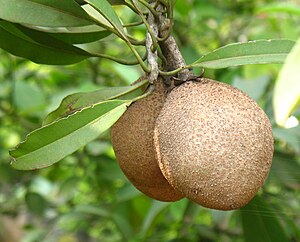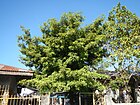Note: This is a project under development. The articles on this wiki are just being initiated and broadly incomplete. You can Help creating new pages.
Difference between revisions of "Manilkara zapota - Chikoo"
(→Photo Gallery) |
(→References) |
||
| Line 77: | Line 77: | ||
<references> | <references> | ||
| − | <ref name="chemical composition">[http://ir.cftri.com/8047/ " | + | <ref name="chemical composition">[http://ir.cftri.com/8047/ "Chemical composition"]</ref> |
| − | <ref name="Leaf">[https://florafaunaweb.nparks.gov.sg/special-pages/plant-detail.aspx?id=3014 " | + | <ref name="Leaf">[https://florafaunaweb.nparks.gov.sg/special-pages/plant-detail.aspx?id=3014 "morphology"]</ref> |
| − | <ref name="How to plant/cultivate">[http://tropical.theferns.info/viewtropical.php?id=Manilkara+zapota " | + | <ref name="How to plant/cultivate">[http://tropical.theferns.info/viewtropical.php?id=Manilkara+zapota "Cultivation Details"]</ref> |
</references> | </references> | ||
Revision as of 11:20, 4 May 2018
Manilkara zapota, commonly known as the sapodilla is a long-lived, evergreen tree native to southern Mexico, Central America and the Caribbean. An example natural occurrence is in coastal Yucatán in the Petenes mangroves ecoregion, where it is a subdominant plant species. It was introduced to the Philippines during Spanish colonization. It is grown in large quantities in Pakistan, India, Thailand, Malaysia, Cambodia, Indonesia, Bangladesh and Mexico.
Contents
Uses
fever, haemorrhage, wounds, ulcers, diarrhoea, indigestion, urinary and gall bladder stones, thrush in babies.
Parts Used
Chemical Composition
sugars, proteins, ascorbic acid, phenols, carotenoids and minerals such as Fe, Cu, Zn, Ca and K[1]
Common names
| Language | Common name |
|---|---|
| Kannada | Chikku |
| Hindi | Chikoo |
| Malayalam | |
| Tamil | Chappotta |
| Telugu | Sima ippacettu |
| Marathi | NA |
| Gujarathi | NA |
| Punjabi | NA |
| Kashmiri | NA |
| Sanskrit | |
| English | Chikoo, Sapodilla plum |
Habit
Identification
Leaf
| Kind | Shape | Feature |
|---|---|---|
| Simple | Spiral | Foliar Shape(s) is Non-Palm Foliage (Elliptical), Foliar Apex / Tip is Acute and Foliar Base is Acute |
Flower
| Type | Size | Color and composition | Stamen | More information |
|---|---|---|---|---|
| Bisexual | Small | Green | Flowering Period is Free-Flowering and Flowering Opening Time is Time-Independent |
Fruit
| Type | Size | Mass | Appearance | Seeds | More information |
|---|---|---|---|---|---|
| Simple Fruit | Fruit Type is Fleshy Fruit (Non-Accessory Fruit: Berry) | Mature Fruit Colour is Brown | {{{6}}} |
Other features
List of Ayurvedic medicine in which the herb is used
- Vishatinduka Taila as root juice extract
Where to get the saplings
Mode of Propagation
Seeds, Cuttings, Air layering.
How to plant/cultivate
Sapodilla can grow well in a wide range of climatic conditions from the wet tropics to dry cool subtropical areas; but they prefer a moist hot climate similar to that found at medium to low elevations, usually below 600 metres,[3]
Commonly seen growing in areas
Lowland forest, Coastal forests.
Photo Gallery
References
External Links
- Pages that are stubs
- Ayurvedic Herbs known to be helpful to treat fever
- Ayurvedic Herbs known to be helpful to treat haemorrhage
- Ayurvedic Herbs known to be helpful to treat wounds
- Ayurvedic Herbs known to be helpful to treat ulcers
- Ayurvedic Herbs known to be helpful to treat diarrhoea
- Ayurvedic Herbs known to be helpful to treat indigestion
- Ayurvedic Herbs known to be helpful to treat urinary and gall bladder stones
- Ayurvedic Herbs known to be helpful to treat thrush in babies
- Herbs with fruit used in medicine
- Herbs with stem used in medicine
- Herbs with Root used in medicine
- Herbs with Shoot used in medicine
- Herbs with common name in Kannada
- Herbs with common name in Hindi
- Herbs with common name in Tamil
- Herbs with common name in Telugu
- Herbs with common name in English
- Habit - Tree
- Index of Plants which can be propagated by Seeds
- Index of Plants which can be propagated by Cuttings
- Index of Plants which can be propagated by Air layering
- Herbs that are commonly seen in the region of Lowland forest
- Herbs that are commonly seen in the region of Coastal forests
- Herbs








